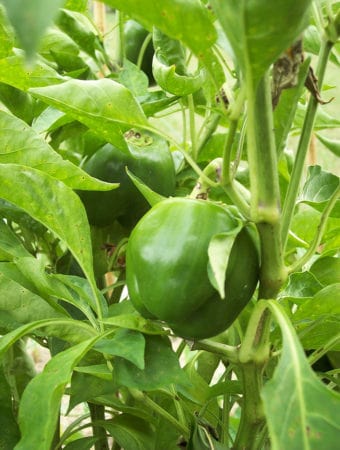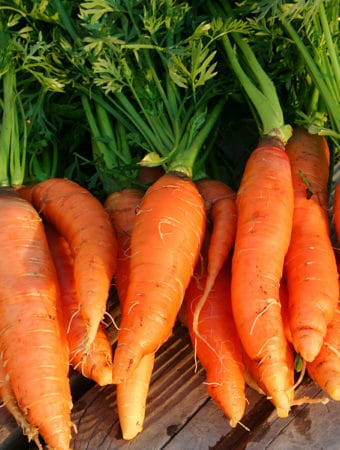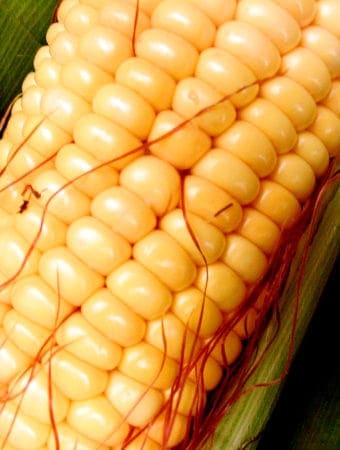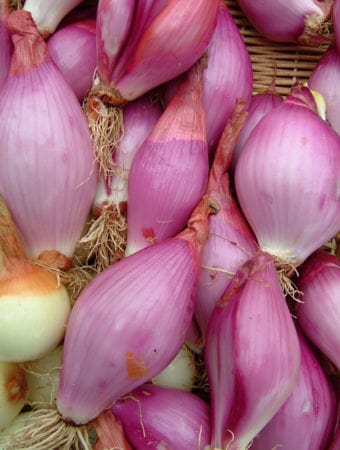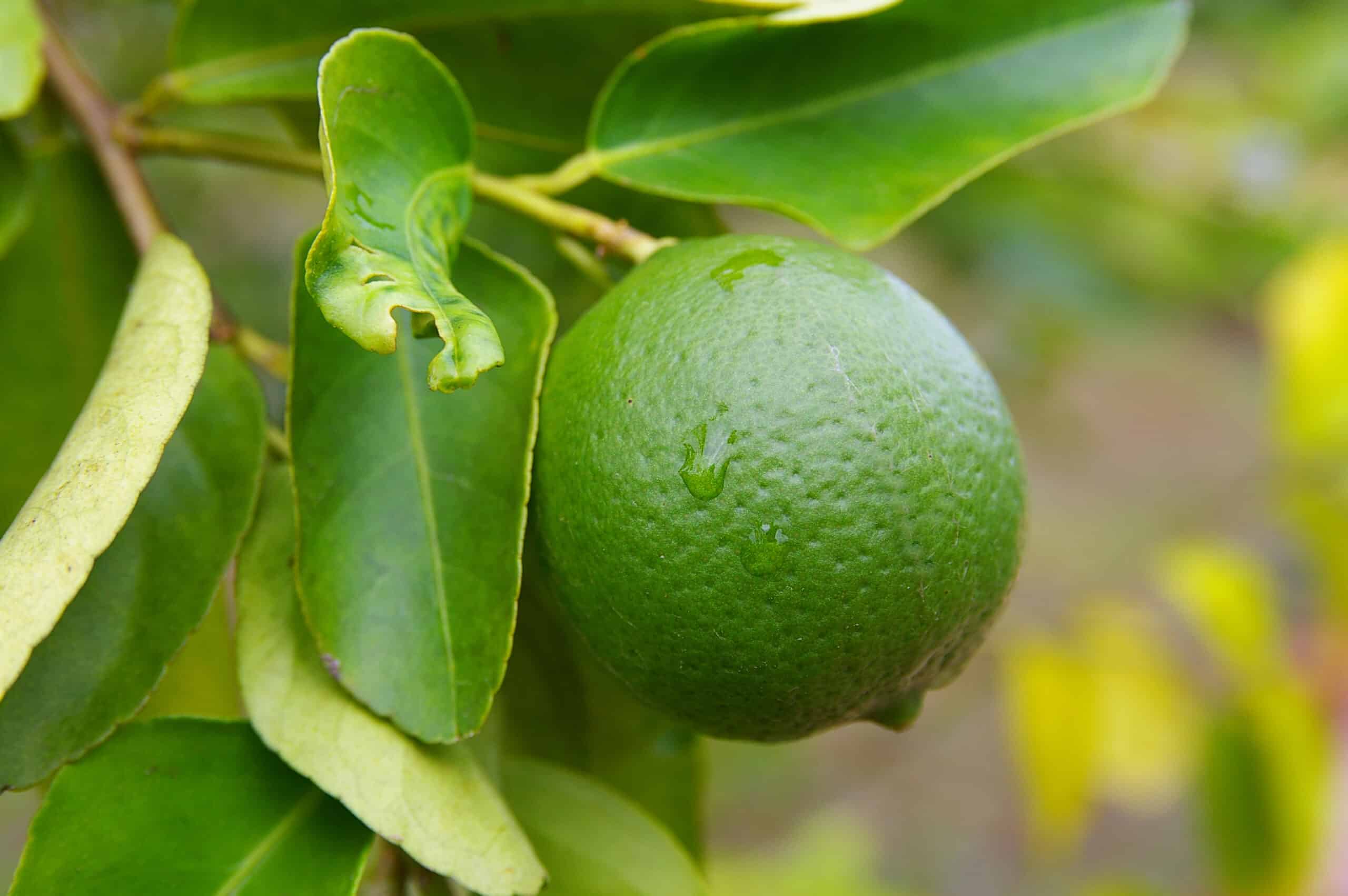
Limes are too tart to eat on their own, but like lemons, they add a refreshing tang to both sweet and savory dishes.
Limes are grown mostly in Florida, California, along the Gulf Coast, and in Mexico. Limes are the least cold-tolerant of citrus fruits. They are best grown where summers are hot and winter temperatures do not drop below 20°F. Limes will not fruit if temperatures drop below 27°F after the tree has flowered.
Limes can be divided into two groups: large-fruited limes and small-fruited limes.
Small-fruited limes are known as Mexican limes. They also are called West Indian limes, Key limes, and bartender’s limes. (These are all the same fruit.) The Mexican lime is small, about 1 to 2 inches across. The fruit has a rich, aromatic flavor. The fruit is deep and borne on a small thorny, tree-shrub that grows about 6 to 13 feet tall. In Florida, the Mexican lime is known as the Key lime. The fruit is preferred for marmalades and Key lime pie.
Large-fruited limes are known as Persian limes and also by other common names including Bearrs lime, Tahitian lime, and seedless lime. The fruit is about 2½ inches in diameter or with slightly nippled ends. It is often picked green but yellows as it ripens. It grows on a nearly thornless tree that can grow to 20 feet tall. The Persian lime is a few degrees hardier than the Mexican lime. The fruit is juicy and used to make limeade and marinades; if sliced thin Persian limes can be eaten rind and all.
The differences between the Mexican lime and Persian lime are pronounced. Here are a few easy ways to distinguish between the two: the Mexican lime fruit is smaller; the tree is thornier and less vigorous, the leaves are small and pale. The Persian lime fruit is larger and virtually seedless; the fruit is less aromatic and less flavorful than the Mexican lime. The Mexican lime is more sensitive to cold than the Persian lime—the Mexican lime requires more heat to develop fruit. The Mexican lime grows best in frost-free, humid, semitropical climates such as Mexico and Florida (where lemons do not grow well). The Persian lime will grow where lemons grow, drier less tropical California, for example.
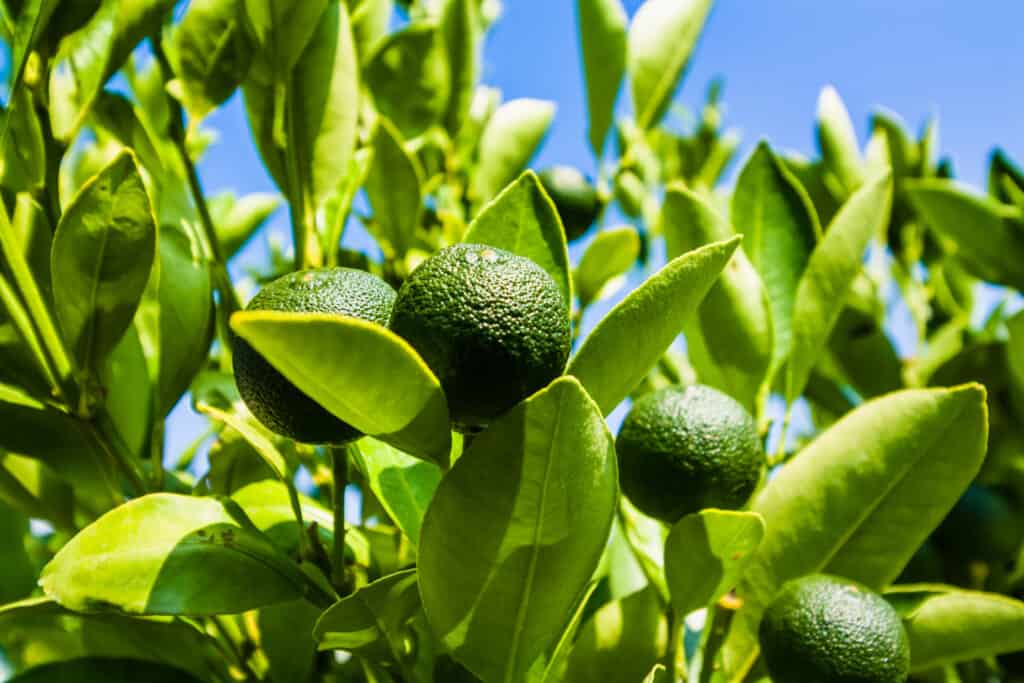
Grow limes as you would other citrus trees. See How to Grow Citrus.
Harvest limes when they reach acceptable size; fully mature fruit turns from green to yellow. Limes are marketed green to distinguish them from lemons, but if left on the tree they turn yellow. The ripeness of a lime is determined not by rind color but by the juiciness of the fruit.
Dwarf and semi-dwarf lime trees can be grown in containers, but the flavor of the fruit will be inferior to a lime grown in the garden or orchard. Lime trees are difficult to grow indoors without supplemental light.
True Limes
Mexican or Key, also called West Indian or bartender’s (Citrus aurantifolia): very small, juicy, and acidic, with distinctive aroma, picked when green; straw yellow flesh is seedy; rind turns yellow-orange and fruit drops from tree when mature; little flavor difference between green and yellow fruit but do not pick small, flavor increases with size; everbearing, limes at various stages of ripeness are seen on the same plant; medium twiggy tree to 15 feet tall with small leaves, many short thorns (‘Mexican thornless’ is a thorn-free cultivar); very frost sensitive; needs long, hot summers and frost-free winters; in mild climates plant in a sheltered, south-facing hot spot or plant in a container that can be moved during cold spells.
Persian or Bearss, also called Tahitian (Citrus latifolia): large-fruited lime; fruit is nearly the size of a lemon; acidic, very juicy; true acid lime flavor; thin rind which can be eaten with flesh; usually picked green, yellow when matures on tree; seedless; peeling difficult; fragrant blossom; shiny fruit harvest in summer in hot regions, in milder climates harvest throughout the year; fruit does not hold well on tree; medium-size thorned tree with open structure when young becomes dense and round when mature; grow 15 to 20 feet tall; needs less heat to ripen than Mexican –good choice in California; as hardy as a lemon. These limes are self-fertile.
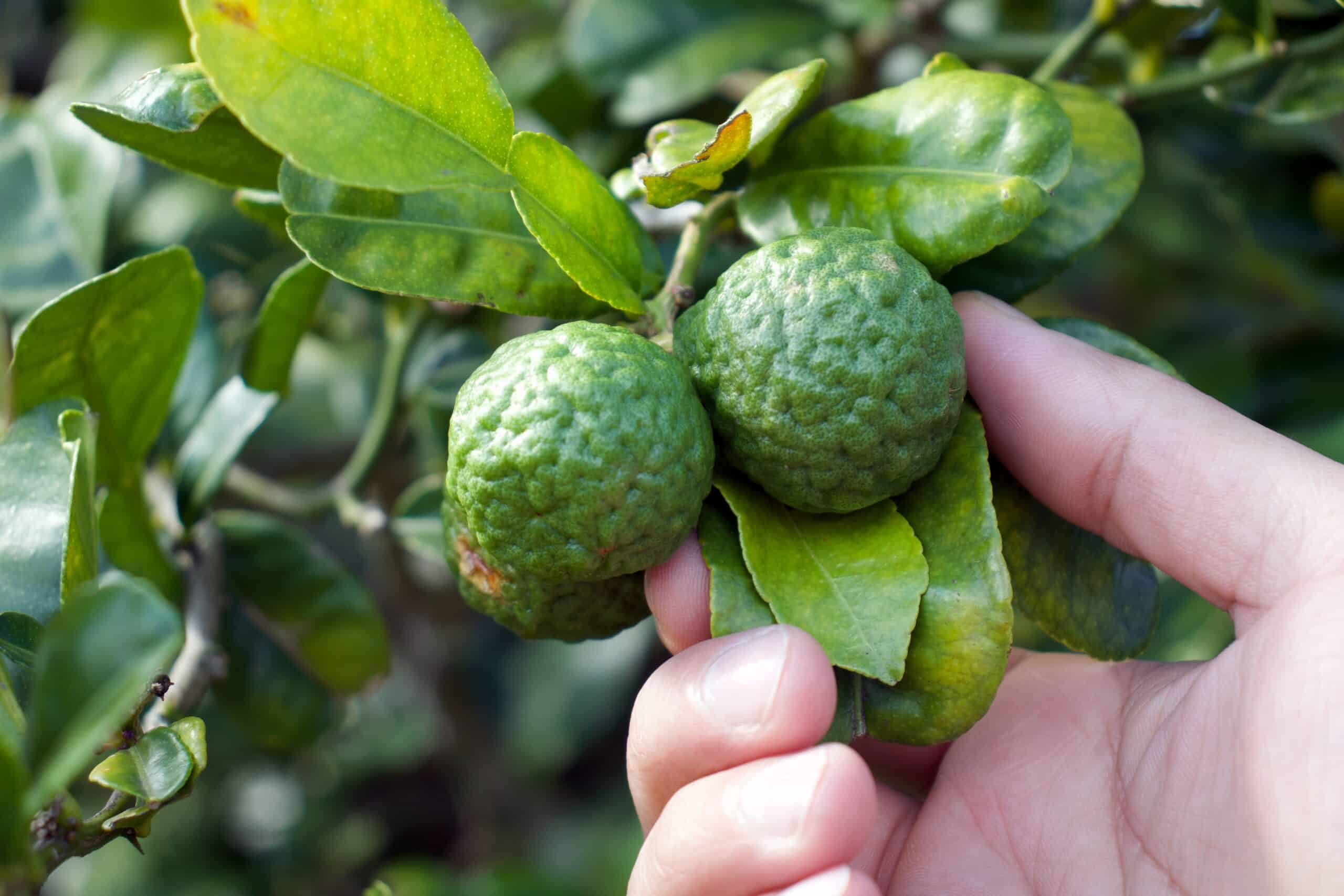
Lime Substitutes (not true limes)
Kieffer, also called Kaffir and Kuffre: is not a true lime but a separate species Citrus hystrix; grown primarily for its elongated, notched leaves which are used as a flavoring in Thai and Cambodian cooking; small, bumpy, dark green rind is intensely aromatic; seedy, sour light green flesh with little juice; frost-tender thorny shrub fruit.
Palestine Sweet, also called Indian sweet lime: separate species Citrus limettiodes; small to medium size fruit; thin-skinned turns from greenish to orange-yellow with ripening; flesh is yellow and juicy; acidless flavor often described as insipid perhaps mildly sweet; popular for juice; few seeds; used in Middle Eastern, Indian, and Latin American cooking; medium-size; bears a single crop in fall or winter; cold-sensitive shrubby plant; ‘Mary Ellen’ is a large-fruited cultivar.
Mexican Sweet: is believed to be a cross between Mexican limes and sweet lemons, a hybrid, not a true lime. They are extremely sweet when ripe without the citric acid. They are the same size as a Mexican lime but are more yellowish-green in color. Mexican sweet limes are aromatic, the juice has a deep rich flavor. Mexican sweet lime is hardier than other limes. It can be cross-pollinated with a sweet orange or a lemon tree.
Rangpur: not a true lime but a sour-acid mandarin; actually a hybrid between a mandarin orange and the citron; botanical name Citrus x limonia; often used as a lime substitute; small to medium size fruit; very acidic, juicy flesh; rind turns reddish-orange when mature; peels easily; fruit holds very well on tree; medium-size tree spreading with drooping habit; few thorns; very cold tolerant; ‘Otaheire’ is an acidless semi-dwarf form for containers.
Also of interest:
How to Plant, Grow, Prune, and Harvest Citrus




